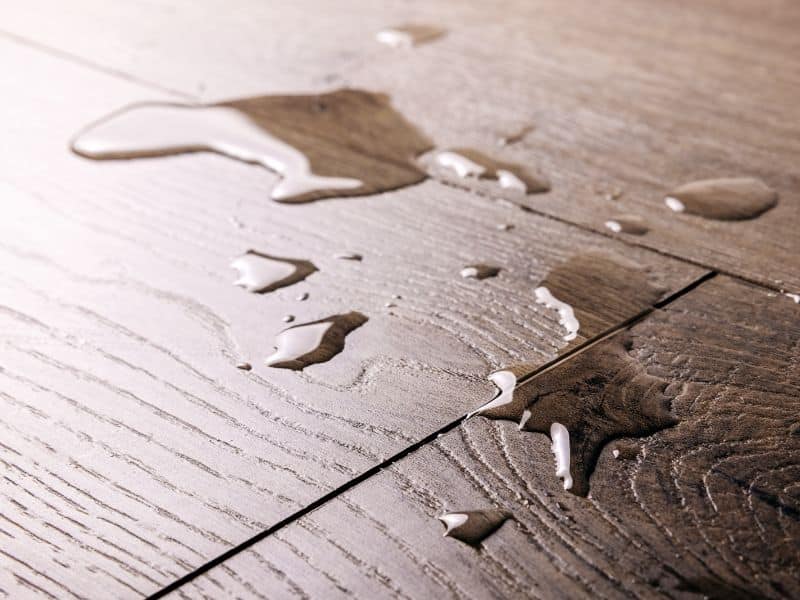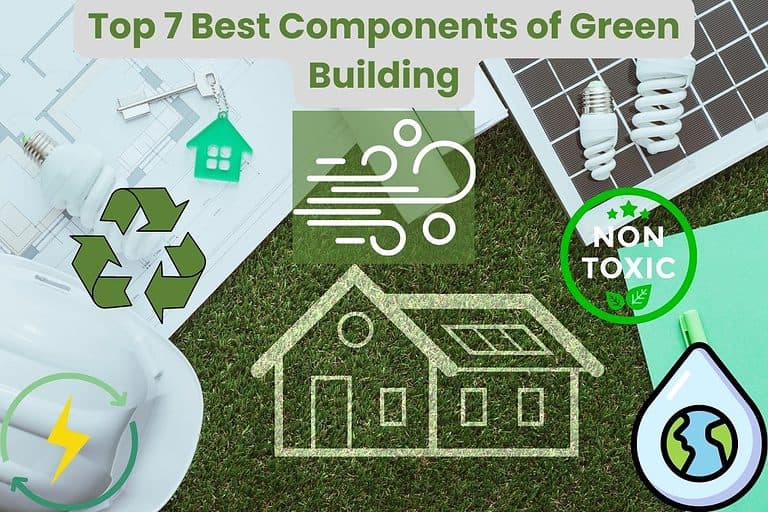Disadvantages of Engineered Wood Flooring (Should You Use?)

Engineered wood flooring is popular because it’s highly stable and affordable.
It’s also ideal for areas with high exposure to water, such as kitchens, bathrooms, and basements. However, like any other material, engineered wood flooring has drawbacks.
Homeowners and builders want to weigh the advantages and disadvantages of building materials to find a suitable option that guarantees value for their money.
Therefore, before settling on engineered wood flooring, you’ll want to know its disadvantages to avoid any nasty surprises. This will help you know whether you should use it in your project.
In the rest of this article, I’ll discuss the disadvantages of engineered wood flooring.
I’ll dive deeper into this to help you put your money into something you’re sure will serve your home well. Let’s get started!
1. It’s Unsuitable for Refinishing

Let’s face reality – with time, your wooden floor will become dull due to scratches and fade due to UV radiation if exposed to the sun.
If you have solid hardwood flooring, you can extend its life by refinishing it. An excellent way to refinish the floor is by sanding away a paper-thin layer off the top and then applying a clear polyurethane finish.
However, is the same true for an engineered wood floor?
Engineered wood flooring should not be refinished unless you’re sure the wear layer veneer is thick enough.
Refinishing engineered wood flooring with a thinner wear layer can expose the core layer, which is unsightly and makes the flooring highly susceptible to water damage.
Moreover, even if your engineered wood flooring has a thicker top layer, you can only refinish it 1 to 3 times, depending on the thickness.
A general guideline for refinishing engineered wood flooring is as follows:
- 1/8″ of veneer can be refinished twice.
- 3/16″ of veneer should be refinished three times.
You must take great care when refinishing engineered wood. You’ll have to replace your engineered wood floor if refinishing has reduced the veneer thickness to a point where further refinishing is impossible without causing damage.
2. Shorter Lifespan
The purpose of refinishing a wooden floor is to extend its lifespan by making it bright and colorful again. However, we just mentioned that engineered wood flooring can only be refinished a few times.
Unlike hardwood which can be refinished many times to extend its lifespan, some engineered wood flooring cannot be refinished even once, and you can’t refinish any engineered wood flooring more than three times.
The above point explains why solid hardwood flooring has a lifespan of 100 years while engineered wood flooring has a lifespan of between 25 and 30 years.
3. Possibility of Low-Quality

Some engineered wood flooring manufacturers may want to use shortcuts to save money and time. Consequently, they may use lower-quality materials for the three layers to achieve this goal.
When manufacturers use low-quality materials, the product itself will be of poor quality. For example, a low-quality engineered wood floor will need to be replaced sooner rather than later and is a false economy in the long run.
While these floors are marketed as highly stable and capable of withstanding moisture, a low-quality option will not match this standard. Furthermore, if you’re unfortunate enough to inherit such a floor, you’ll be amazed at how quickly it gets damaged and will need replacing well before 25 years.
4. It Fades When Exposed to the Sun

The chances of your engineered wood flooring fading are higher if you have a room with bright sunlight.
Engineered wood floors fade when exposed to the sun due to UV rays. These rays break the wood’s chemical bond, exposing them to fading.
The sad reality is that the faded areas appear more obvious to the eye. Therefore, the best solution to the fading menace is to keep your drapes and blinds closed as much as possible when the sun shines onto the floor.
5. Possibility of Delamination Over Time

Delamination refers to a situation whereby the adhesives holding the different layers of an engineered wood fail.
In most cases, delamination in engineered wood flooring happens due to the breakdown of the wood’s cellular structure. The breakdown is usually due to prolonged exposure to moisture.
When delamination occurs, the engineered wood flooring loses its structural integrity. Consequently, you’ll start having a spongy subfloor where the only solution is to replace it.
6. Susceptibility to Scratches and Dents
The wear layer of engineered wood flooring is made from hardwood veneers. These veneers are highly susceptible to scratches and dents.
Although solid hardwood floors are also susceptible to scratches and dents, you can always refinish them for a better appearance. Sadly, this is not always the case with engineered wood flooring.
The situation worsens if you get low-quality engineered flooring. Usually, such options will have thinner wear layer veneers and thinner core layers. Therefore, they are more susceptible to dents and scratches.
7. Hazardous Chemicals and VOCs

Did you know that engineered hardwood floors contain formaldehyde? If you didn’t before, you do now.
Formaldehyde and isocyanates are used as resins to bind the layers of engineered wood flooring.
Unfortunately, formaldehyde is a known carcinogen, meaning it can cause cancer.
Moreover, formaldehyde and isocyanates can off-gas chemicals into an indoor environment, reducing your home’s indoor air quality (IAQ).
8. It’s Not Waterproof

I’ve already mentioned that engineered hardwood flooring can withstand high moisture levels. However, you shouldn’t confuse this with being waterproof.
Although it can withstand moisture, engineered wood flooring is not waterproof. Therefore, it will warp and bend when soaked in water. This can only happen if you expose the floor to standing water for prolonged periods.
Thus, if you have engineered wood flooring, promptly wipe up any spills and wet areas to protect them from water damage. Otherwise, you risk your floor swelling or warping that will need replacement within a short time.
9. High-Maintenance
I’ll be frank: some engineered wood flooring can be high maintenance.
The top veneer requires regular maintenance to remain in top condition. It’s advisable to carefully clean these floors with a damp cloth or well-wrung mop instead of sloshing loads of water around them with a bucket and mop, which you can get away with on tiled floors.
As I mentioned, you shouldn’t allow standing water onto your engineered wood floors because it’s not waterproof. As a result, you should only use a damp (not soaking wet) mop.
Other maintenance tips for an engineered wood floor include the following:
- Maintaining relative indoor humidity between 40 and 65%.
- Installing felt pads on all furnishings.
- Lifting items instead of dragging them to prevent scratches.
- Applying lacquer protection regularly.
- Placing a mat at external doors to control dirt.
Disadvantages Of Engineered Wood Flooring – Summary
Engineered wood flooring can’t be refinished more than 1-3 times, so it can’t be spruced up as often as traditional solid hardwood flooring, which consequently lasts much longer.
Choosing engineered wood flooring or not ultimately comes down to your preference, lifestyle, and budget.
Engineered wood flooring may be your best option if you’re on a tight budget or don’t intend to stay in your home for many years. Otherwise, if you want a more durable option that you can refinish many times to keep it looking good, invest in traditional solid hardwood flooring.
Now that you know the disadvantages of engineered wood flooring, check out this article for how to use recycled plastic in your next construction project.







